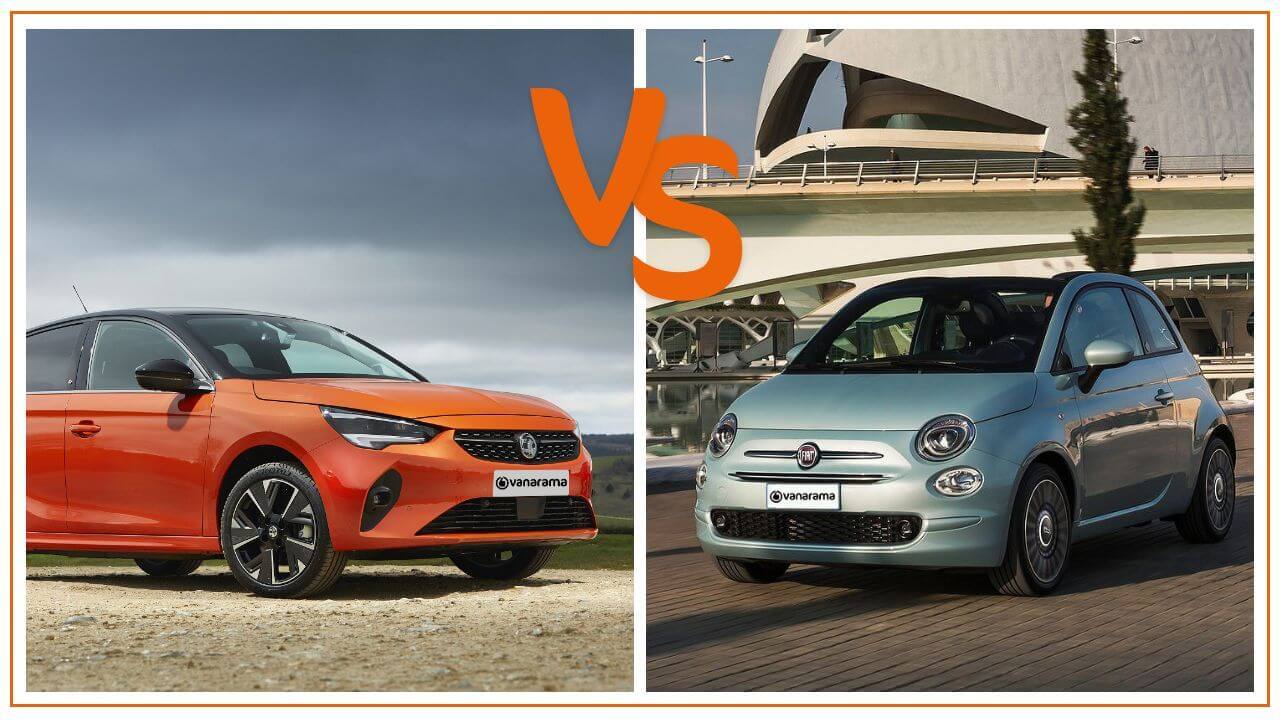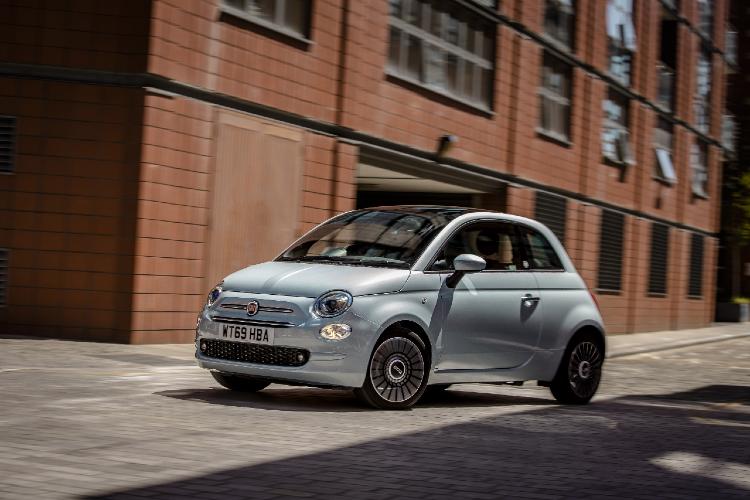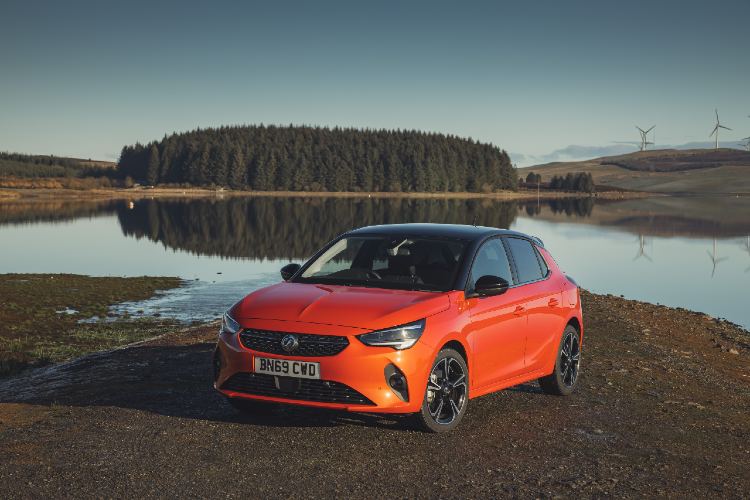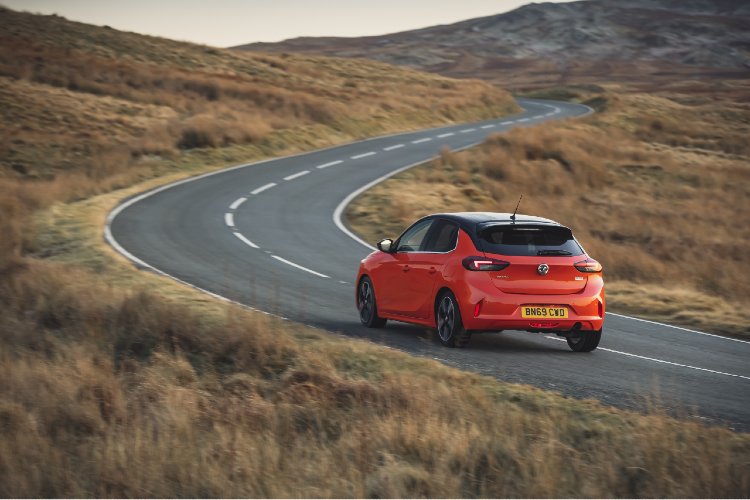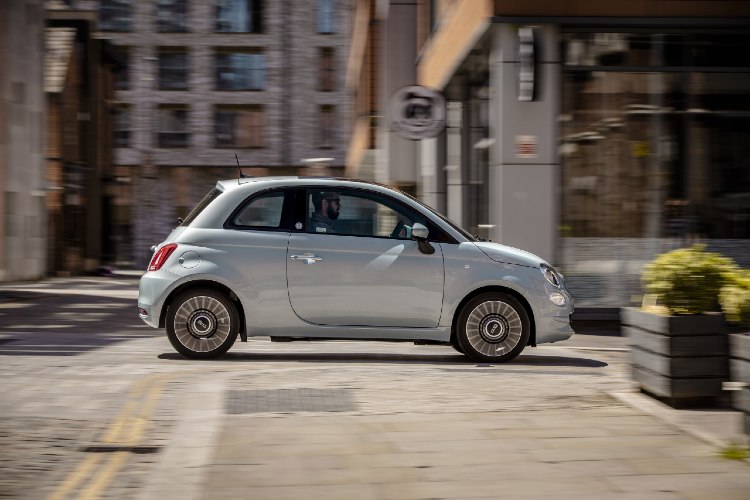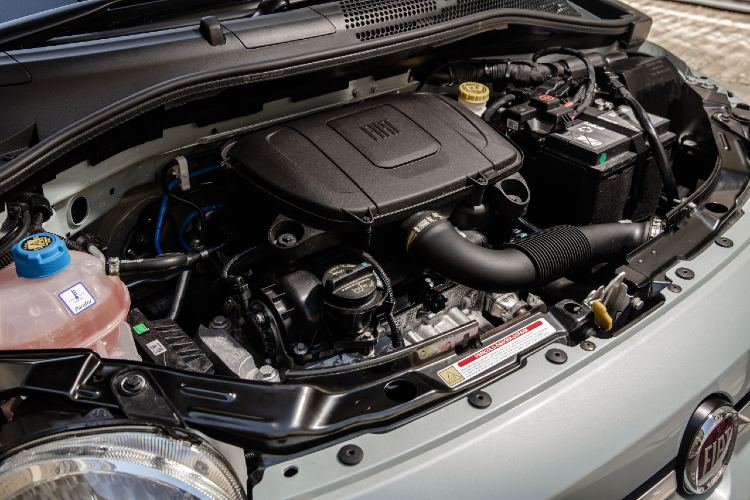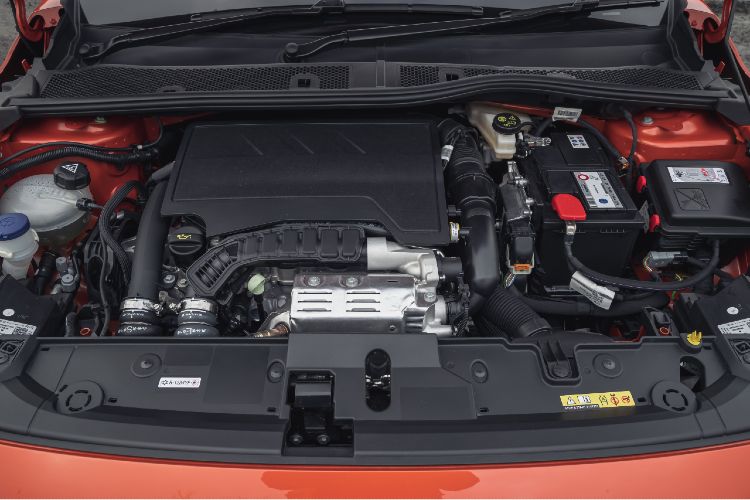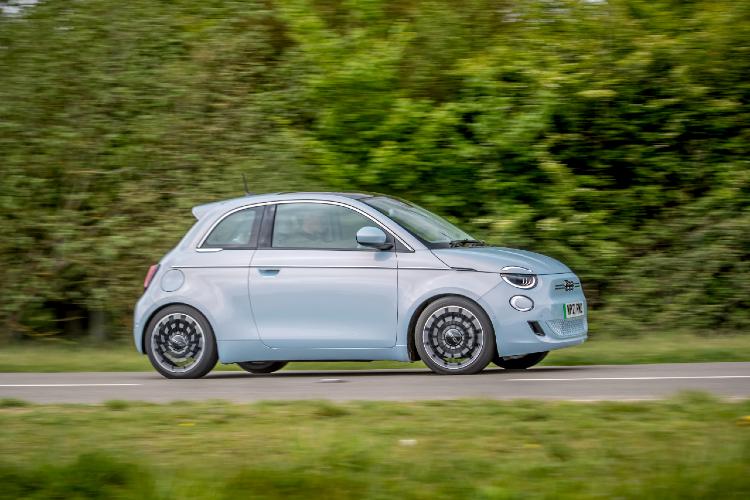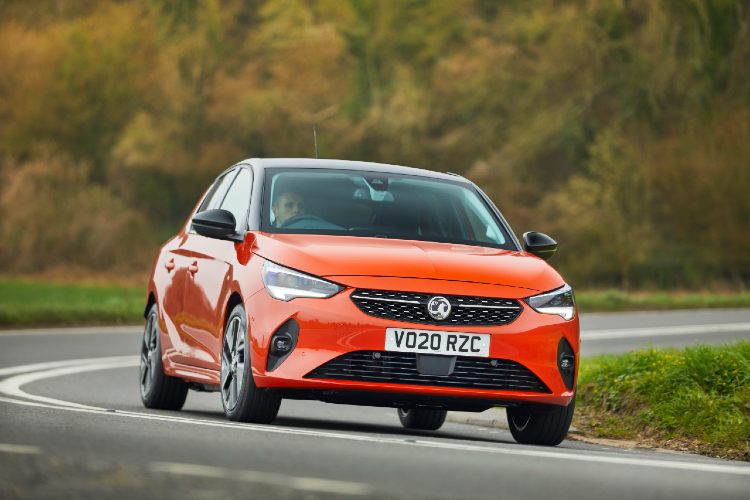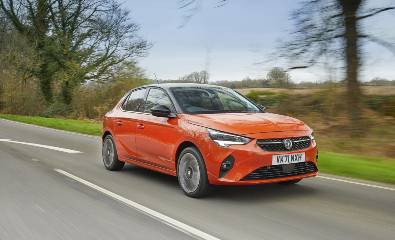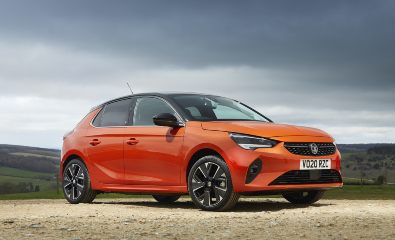If you’re in the market for an affordable runabout, there’s plenty of choice nowadays – whether you want a conventional petrol (or diesel) engine under the bonnet, or whether you’re in the mood to make the transition to electric power early. Whatever your needs are, the enduringly popular Vauxhall Corsa and Fiat 500 are bound to be on your radar.
Admittedly, these two hatchbacks are slightly different in terms of size, but as they can be very similar in price, specifically monthly leasing costs, then this is a classic case of style versus substance.
Style Vs Substance - Is The Fiat 500 Supposed To Be The Style?
It certainly is. Based on a design that has been around since the 1950s, the cheeky Fiat is all about aesthetic appeal. The Italian company revived the ‘Cinquecento’ in 2007 and it has been a resounding success for Fiat, thanks to its cutesy bodywork and an interior that places eye-catching design over and above outright functionality. Even more than a decade after it arrived, the 500 still has bags of kerb appeal.
See the full range of Fiat 500 colours available.
But The New Vauxhall Corsa Looks Pretty Good Too, Right?
Yes, Vauxhall has pulled out the stops with its design in recent years and the sharp-suited Corsa is no exception to the rule. It doesn’t quite have the flat front end and squared-off daytime running lamps (DRLs) of the current Mokka and incoming Astra models, but it’s still a lot more pleasing to behold than its immediate predecessor. Underneath, it’s based on the same mechanical bits as Peugeot’s excellent 208, so it should be decent to drive as well.
Want a detailed look at the paint palette available? Read our Vauxhall Corsa colour guide.
So What Is The Difference In Terms Of Size Between The Two?
The Vauxhall Corsa is 500mm longer and has a wheelbase that is 238mm greater than that of the Fiat 500. Also, the Corsa comes only as a 5-door hatchback, whereas the Fiat is available as either a 3-door hatch or a 2-door soft-top convertible called the 500C.
I’m Better Off Getting The Corsa, Then?
Well, if you regularly carry people in the back seats, possibly, although space in the 2nd row of the Vauxhall is not actually that generous. It is, of course, more accommodating than the Fiat’s rear bench and also much easier for people to get into and out of, thanks to the pair of back doors, but if you don’t need to regularly cart yourself and at least 2 other people around the place, the Fiat is better than you think. Unless you’re really, really tall. In which case, the 500’s less-than-generous driving position might become an issue.
What’s The Corsa Like To Drive?
While not quite as enjoyable as some other rivals like the Ford Fiesta, Renault Clio and, weirdly enough, the very Peugeot 208 it is based upon, the Corsa handles pretty well when compared to Vauxhall’s product output in this department before. However, the real strength of the car is its ride comfort. The Corsa is really smooth and pleasant to travel in, and it keeps quiet even when you’re motoring along at motorway speeds. As ‘runabouts’ go, the Vauxhall feels like a much more grown-up and bigger car than it actually is.
For a deeper look at how the Vauxhall handles, take a look at our expert Corsa review.
How Does The Fiat 500 Drive?
There’s a certain joy to be had in the way the Fiat 500 scoots about cities, which are its natural driving environment, and its diminutive footprint means it is agile and manoeuvrable in all circumstances. It’s also much more refined and capable on motorways than you might give it credit for.
But it’s not brilliant in the corners, as the chassis feels buttoned-down and reserved, while the steering lacks for much in the way of anything other than overly zealous power assistance. There are some powerful Abarth versions to go at if you really want some excitement at the wheel of a 500, but as they’re a lot more expensive to lease and we’re considering urban commuters in this twin test, they don’t count towards the Fiat’s score.
For the full lowdown on this iconic city car, check out our Fiat 500 review.
What Are The Engine Choices?
The Fiat’s simple: there’s 1 engine. It’s a 1.0-litre, 3-cylinder non-turbocharged petrol called the ‘Firefly’, which is, um, augmented by a 12-volt electrical system so that all Fiat 500s go under the epithet ‘Hybrid’. Powerful, this system is not. Neither in terms of the electrical energy it harvests to save some fuel, nor in the performance stakes. The 500 Hybrid possesses just 70hp and 92Nm, figures which result in a 0-62mph of 13.8 laborious seconds. In truth, it doesn’t feel even as quick as that, and its lack of turbocharged torque means you need to do more work with the (admittedly nice) 6-speed manual transmission to keep up with ebb-and-flow traffic on the motorway or fast A-roads.
The Vauxhall is much better in this regard, using a host of Peugeot-Citroen-sourced engines to offer a nice spread of powertrains. There’s a solitary 1.5-litre 4-cylinder turbodiesel, delivering 102hp, and there’s also a non-turbo 75hp 1.2-litre 3-cylinder petrol, but we’d advocate looking at one of the super-sweet turbocharged 1.2-litre petrols. There’s a choice of either 100- or 130hp, the latter only coming with a decent 8-speed automatic gearbox, and there’s more than enough gumption about the 100hp unit for it to suit your everyday needs. It comes with a 6-speed manual transmission as standard, with the 8-speed auto an option.
Vauxhall claims 53.3mpg economy and 119g/km CO2 for a manual 100hp model of the Corsa on larger alloy wheels, strong figures when compared to the smaller, lighter Fiat 500 Hybrid’s numbers – which has the same economy of 53.3mpg, although lower CO2 emissions of a claimed 88g/km. If you’re a company-car user on a budget, the Fiat’s lower benefit-in-kind (BIK) requirements might just swing things here.
What About The Electric Versions?
We most certainly did and if you’re after low BIK, these are the versions to go for. However, there’s a slight complication here in that the electric Fiat 500 is an all-new car – it might look similar to the 500 Hybrid, but every panel on the outside is different and it has grown in size, so the interior is more accommodating for all passengers.
The 500 electric comes with 2 battery pack and motor choices: either a 24kWh battery with a 70kW (95hp) electric unit, resulting in a 115-mile range, a 9.5-second 0-62mph time and a top speed of 84mph; or a ‘Long Range’ model with a 42kWh battery, an 87kW (118hp) motor and stats of 199 miles of driving capability, 0-62mph in 9 seconds and a 93mph maximum speed. It also looks suitably funky inside and out, the cabin in particular being a big step up in quality from the Fiat 500 ‘Classic’ – which is the name the internal-combustion models of the Italian city car will now be sold under for the next few years, alongside the newer electric version.
As for the Corsa-e, its 50kWh battery and 136hp electric motor allow for a claimed maximum driving range of 209 miles, with 0-62mph in 8.1 seconds and the same 93mph top speed as the Fiat. The Vauxhall electric is much more prosaic, though, as the Corsa-e looks practically identical to any Corsa with a combustion engine. Some people will like this, others would demand more visual flair from their forward-thinking EVs.
Which One Has The Best Interior?
The Vauxhall’s is roomier and more practical, and it’s decently built and appointed too. The Fiat 500 Classic’s cabin is pleasingly pretty but the operating systems and technology which underpins it these days feels considerably out-of-date. By contrast, the 500 electric’s cabin is brilliant, full of wonderful touches, quality materials and sharp electronics. The Corsa therefore wins if you need an internal combustion engine, but the zero-emissions 500 trumps the Corsa-e.
Should I Choose The Corsa Or The Fiat 500?
If you’re talking about the Classic Fiat 500 Hybrid versus a 100hp Vauxhall Corsa, it’s the Vauxhall every time. It might not be quite as interesting to look at or sit in, but it’s a nicer car to drive and it has the practicality/refinement issues licked. It’s also no worse on fuel than the part-electrified Italian car. In its defence, the Fiat can be very, very cheap to lease.
However, when it comes to Corsa-e against the new electric 500, that’s far harder to choose. The EV Fiat is a quite brilliant city car and with its Long Range battery pack, it has almost as much driving capability on a single charge as the Corsa. If you prioritise rear-seat access and comfort for passengers plus boot space more than anything else, then the Vauxhall still takes the spoils. But it’s hard to ignore a car as likeable, as wilfully stylish and as wonderfully refined as the Fiat 500 Electric. Therefore, that’s the one we recommend the most here.
Ratings
Fiat 500 Hybrid = 6/10
Vauxhall Corsa Hybrid = 7/10
Fiat 500 Electric = 9/10
Vauxhall Corsa-e = 8/10

